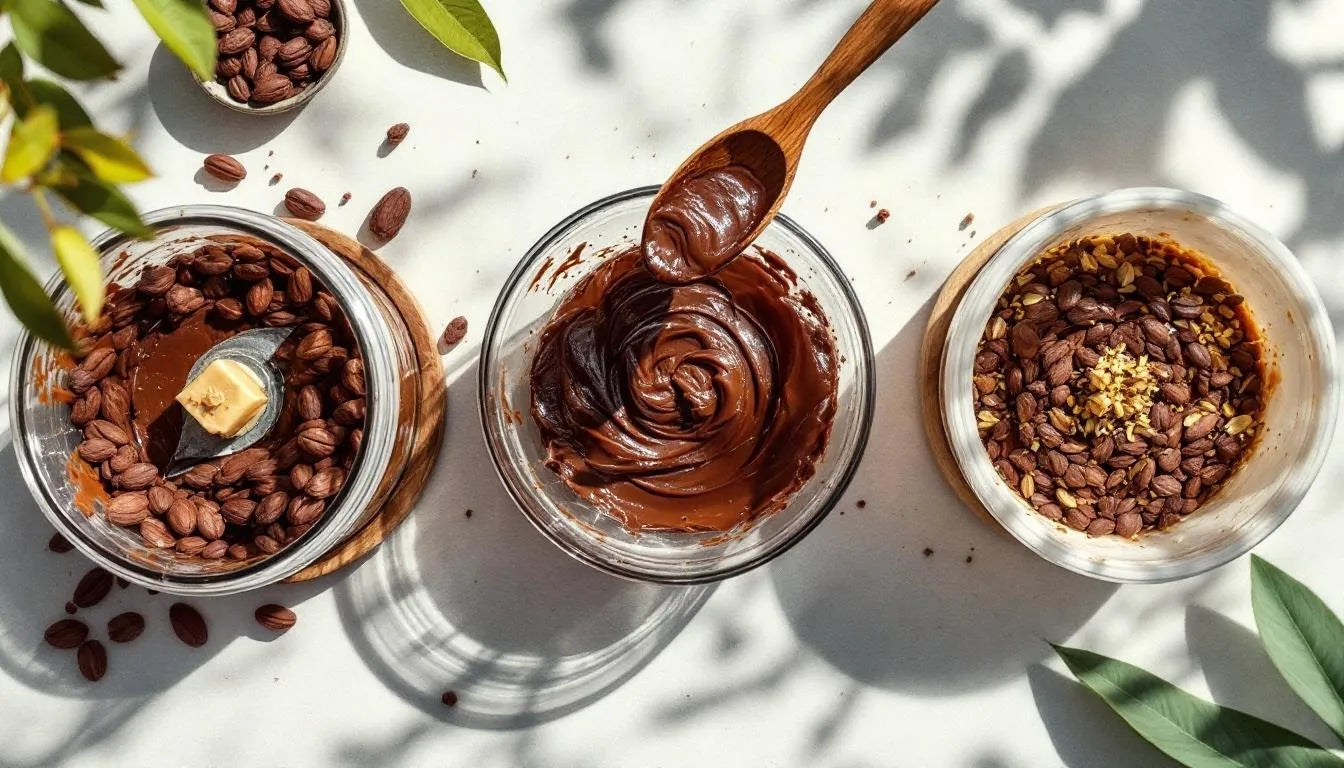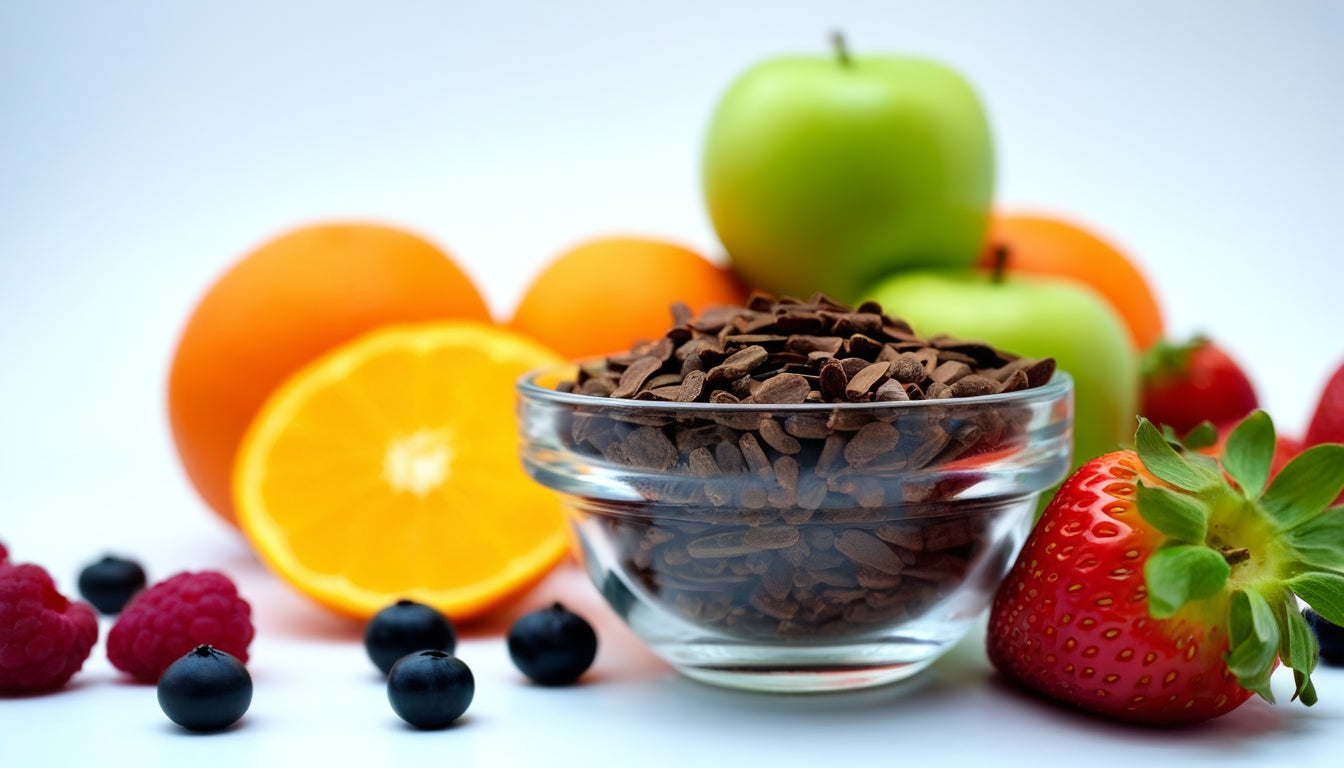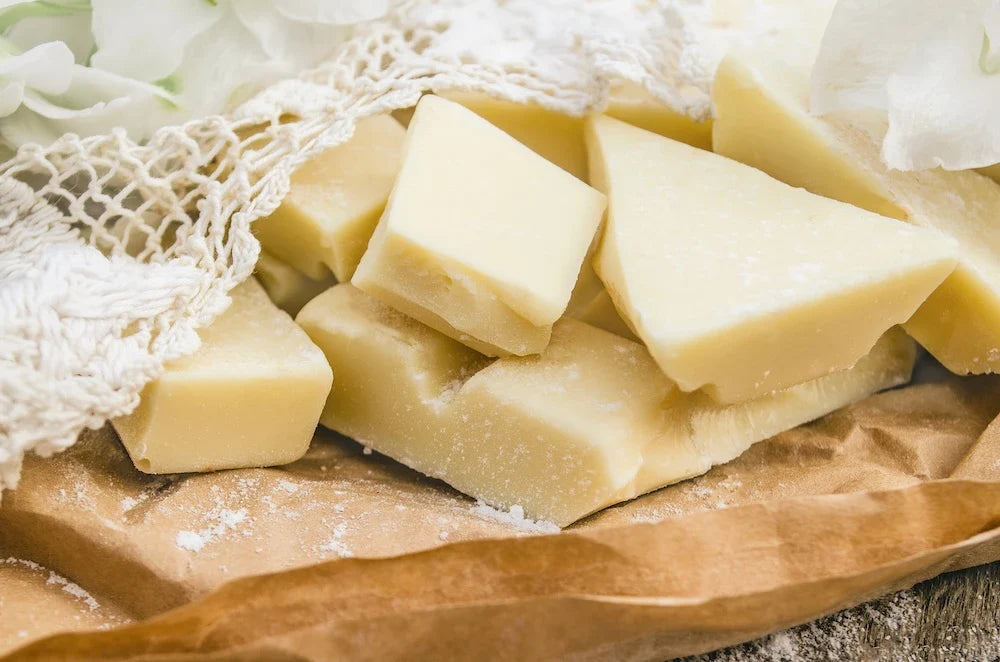
How to Make Cacao Butter: Your Complete Guide to Extracting Nature's Chocolate Gold
Making cacao butter is both an art and a science—transforming humble cacao beans into the luxurious, creamy fat that gives chocolate its signature melt-in-your-mouth texture. Whether you're curious about commercial production or want to try making cacao butter at home, this comprehensive guide will walk you through every step of the fascinating process that creates this valuable ingredient.
Cacao butter, also known as theobroma oil, comprises approximately 50% of the cacao bean and serves as the foundation for all chocolate products. Understanding how to make cacao butter not only deepens your appreciation for chocolate but also opens doors to creating your own confections, skincare products, and culinary masterpieces.

Understanding Cacao Butter: The Foundation of Chocolate
Before diving into the extraction process, it's essential to understand what makes cacao butter so special. Coracao's organic cacao butter exemplifies the pure, unrefined quality that results from proper extraction techniques. Made from rare Criollo cacao beans, this premium butter retains its natural chocolate aroma and beneficial properties.
Cacao butter is the natural fat extracted from cacao beans, containing beneficial compounds like:
- Antioxidants: Protecting against cellular damage
- Healthy fats: Including stearic acid with neutral cholesterol effects
- Natural aromatics: Giving chocolate its distinctive scent
- Vitamins E and K: Supporting skin health and healing
Learn more about these remarkable properties in our detailed guide on cacao butter benefits.
The Commercial Cacao Butter Making Process
Understanding the commercial process provides insight into the craftsmanship behind quality cacao butter production. This method, perfected over centuries, ensures maximum yield and purity.
Step 1: Bean Preparation and Fermentation
The journey begins with carefully sourced cacao beans from premium growing regions. Fresh cacao pods are harvested when fully ripe, and the beans are extracted and fermented for 5-7 days to develop complex flavors.
Step 2: Drying and Roasting
Fermented beans are sun-dried to reduce moisture content to 7-8%. They're then roasted at temperatures between 250-300°F (120-150°C) for 10-35 minutes, depending on desired flavor profiles. This roasting process:
- Develops rich chocolate flavors
- Reduces moisture further
- Makes shell removal easier
- Prepares beans for grinding
Step 3: Winnowing and Nib Separation
Roasted beans are cracked open, and the shells are removed through winnowing, leaving behind pure cacao nibs. These nibs contain all the cacao butter that will be extracted.
Step 4: Grinding into Chocolate Liquor
The nibs are ground using specialized mills that generate heat through friction, melting the cacao butter within the cellular structure. This creates a smooth paste called chocolate liquor (containing no alcohol), which is roughly 50% cacao butter and 50% cocoa solids.
Step 5: Pressing and Separation
The heated chocolate liquor is fed into hydraulic presses that apply tremendous pressure (up to 6,000 PSI). This pressure forces the cacao butter through fine filters while retaining the cocoa solids. The result is:
- Liquid cacao butter: Golden, aromatic fat
- Cocoa press cake: Compressed solids later ground into cocoa powder
Step 6: Purification and Packaging
The extracted cacao butter is filtered to remove any remaining particles and may undergo deodorization if required for specific applications. It's then cooled and packaged for distribution.
How to Make Cacao Butter at Home: Four Practical Methods
While commercial equipment produces larger quantities, you can make cacao butter at home using several methods. Each approach has different equipment requirements and yields.
Method 1: Manual Pressing with DIY Equipment
Equipment Needed:
- Roasted cacao nibs or cacao paste
- Heavy-duty blender or food processor
- Perforated container (colander with small holes)
- Multiple layers of cheesecloth or cotton fabric
- Heavy weights or manual press
- Collection bowl
Step-by-Step Process:
-
Prepare the Cacao Liquor: If starting with nibs, grind them in a high-powered blender until they form a smooth, flowing paste. This may take 10-20 minutes with frequent breaks to prevent overheating.
-
Heat the Mixture: Warm the cacao liquor to about 120°F (50°C) to make it more fluid and easier to press.
-
Set Up Press: Line your perforated container with 3-4 layers of cheesecloth. Place the collection bowl underneath.
-
Add Liquor and Press: Pour the warm cacao liquor into the lined container. Apply steady pressure using weights or a manual press.
-
Extract Butter: As pressure is applied, golden cacao butter will drip through the filters into the collection bowl. This process may take 2-4 hours.
-
Collect and Store: Once no more butter drips out, collect your homemade cacao butter and store it in an airtight container.
Expected Yield: From 500g of cacao nibs, expect 150-200g of cacao butter.
Method 2: Coffee Filter Press Method
Equipment Needed:
- Cacao liquor or melted cacao paste
- Large French press or improvised version
- Multiple coffee filters
- Heat source for maintaining temperature
Process:
- Prepare Liquor: Create smooth cacao liquor as in Method 1
- Layer Filters: Place 4-5 coffee filters in your press device
- Add Liquor: Pour warm cacao liquor over filters
- Apply Pressure: Press down steadily, forcing butter through filters
- Repeat: This may require multiple pressing cycles
This method produces smaller quantities but requires minimal specialized equipment.
Method 3: Specialized Home Oil Press
Equipment Needed:
- Home oil press machine (specifically designed for nuts and seeds)
- Roasted cacao nibs
- Heat source for warming nibs
Process:
- Warm Nibs: Heat cacao nibs to 100-120°F (40-50°C)
- Feed Press: Add warmed nibs to the oil press following manufacturer instructions
- Extract: The machine will automatically separate butter from solids
- Collect: Gather the extracted cacao butter
Advantages: Faster process (30 minutes to 2 hours), better yield, less manual labor.
Method 4: Heat and Gravity Separation
Equipment Needed:
- Double boiler or improvised version
- Fine mesh strainer
- Clean kitchen towels
- Collection container
Process:
- Melt Liquor: Gently heat cacao liquor in double boiler to 140°F (60°C)
- Strain: Pour through progressively finer strainers lined with kitchen towels
- Separate: Allow gravity to separate butter from heavier solids
- Cool: Let butter cool and solidify naturally

Essential Tips for Successful Cacao Butter Making
Temperature Control is Critical
Maintaining proper temperatures throughout the process ensures optimal extraction:
- Grinding temperature: 120-140°F (50-60°C) maximum to prevent burning
- Pressing temperature: 100-120°F (40-50°C) for best flow
- Storage temperature: Cool, dry place below 75°F (24°C)
Quality Starts with Quality Beans
The final product quality depends heavily on your starting materials. Use high-quality, properly fermented and roasted cacao beans or premium cacao products for best results.
Patience Yields Better Results
Rushing the process often results in lower yields and inferior quality. Allow adequate time for:
- Proper grinding to achieve smooth liquor
- Thorough pressing to extract maximum butter
- Complete cooling and solidification
Safety Considerations
- Always handle hot materials carefully
- Ensure electrical equipment is dry and properly grounded
- Work in well-ventilated areas when heating cacao
- Clean all equipment thoroughly before and after use
Troubleshooting Common Cacao Butter Making Issues
Low Yield Problems
Causes and Solutions:
- Insufficient pressure: Increase pressing force or extend pressing time
- Wrong temperature: Ensure cacao liquor is properly heated but not overheated
- Poor grinding: Achieve finer, smoother liquor consistency
- Quality issues: Start with fresher, higher-fat content beans
Grainy or Separated Texture
Causes and Solutions:
- Temperature fluctuations: Maintain consistent temperatures throughout
- Contamination: Ensure all equipment is completely clean
- Overheating: Keep temperatures below 140°F (60°C) during processing
- Inadequate filtering: Use finer filters or multiple filtration stages
Off Flavors or Odors
Causes and Solutions:
- Burnt taste: Reduce grinding speed and processing temperatures
- Stale flavors: Use fresher cacao beans or products
- Contamination: Thoroughly clean all equipment between uses
- Poor storage: Store finished butter in airtight, cool conditions
Uses for Your Homemade Cacao Butter
Once you've successfully made cacao butter, explore its versatile applications:
Culinary Applications
- Chocolate making: Create your own custom chocolate bars
- Baking: Replace regular butter in recipes for subtle chocolate flavor
- Cooking: Use as a unique cooking fat for savory dishes
- Beverages: Add to hot drinks for richness
Discover creative culinary applications in our cacao butter recipes collection.
Skincare and Cosmetic Uses
- Moisturizers: Create rich, nourishing body butters
- Lip balms: Make healing, protective lip treatments
- Soaps: Add luxury and moisturizing properties
- Hair treatments: Develop conditioning hair masks
Learn more about cosmetic applications in our guide to cacao butter benefits for skincare.
Storage and Shelf Life of Homemade Cacao Butter
Proper storage ensures your homemade cacao butter maintains quality and extends its usable life:
Optimal Storage Conditions
- Temperature: 60-70°F (15-21°C) in cool, dry location
- Container: Airtight glass or food-grade plastic containers
- Light exposure: Store in dark areas away from direct sunlight
- Humidity: Low humidity environments prevent rancidity
Expected Shelf Life
- Properly stored: 12-18 months
- Refrigerated: Up to 2 years
- Frozen: Up to 3 years
Signs of Spoilage
Watch for these indicators that your cacao butter has gone bad:
- Rancid or off odors
- Change in color to darker brown
- Unusual texture changes
- Mold growth (in high humidity conditions)
Commercial vs. Homemade Cacao Butter: What to Expect
Understanding the differences helps set realistic expectations:
| Aspect | Commercial | Homemade |
|---|---|---|
| Yield | 40-50% of bean weight | 20-35% of bean weight |
| Quality | Consistent, refined | Variable, artisanal |
| Time Investment | Automated, efficient | Labor-intensive |
| Cost | Higher upfront, bulk pricing | Lower cost, smaller batches |
| Customization | Limited options | Complete control |
Frequently Asked Questions About Making Cacao Butter
Can I make cacao butter from cocoa powder?
No, cacao butter cannot be made from cocoa powder because the butter has already been removed during cocoa powder production. You need whole cacao beans, nibs, or cacao paste that still contains the natural fats.
How much cacao butter can I extract from cacao beans?
Cacao beans are approximately 50% cacao butter by weight. However, home extraction methods typically yield 20-35% due to equipment limitations and processing efficiency. Commercial methods achieve 40-50% extraction rates.
Is homemade cacao butter as good as store-bought?
Homemade cacao butter can be excellent quality, often superior to mass-produced versions because you control every aspect of production. However, it may lack the consistency and refinement of professional products like Coracao's premium cacao butter.
What equipment do I really need to make cacao butter at home?
At minimum, you need a way to grind cacao nibs into liquor (high-powered blender), a pressing method (manual press or improvised system), and filtration materials (cheesecloth or coffee filters). Specialized oil presses make the process easier but aren't essential.
How long does the home cacao butter making process take?
Expect 4-8 hours for the complete process, including grinding, pressing, and collection. This doesn't include preparation time for roasting beans if starting from scratch.
Quick Summary: Mastering Cacao Butter Production
Making cacao butter involves extracting the natural fat from cacao beans through grinding and pressing. Commercial methods use hydraulic presses and specialized equipment, while home methods range from DIY manual pressing to small oil press machines. Success depends on quality ingredients, proper temperature control, and patient execution. Yields typically range from 20-35% for home methods.
Start Your Cacao Butter Journey with Premium Ingredients
Ready to begin your cacao butter-making adventure? Success starts with quality ingredients. Coracao's organic cacao products provide the perfect foundation for your homemade cacao butter, whether you're starting with premium cacao nibs or working with our stone-ground cacao paste.
For those who prefer the convenience of professionally-made cacao butter, our premium organic cacao butter offers the same quality you'd achieve at home, with the consistency and purity that comes from expert production methods. Whether you make your own or choose our artisanal products, you're supporting sustainable, ethical cacao farming while enjoying the purest expression of chocolate's essential ingredient.
Explore the world of cacao butter and discover why this golden treasure has been prized for centuries as both a culinary delight and natural beauty ingredient.

Claire Bennett
I'm Claire, a chocolate lover and artisan based in a small town where I run a tiny home kitchen dedicated to exploring everything chocolate. From single-origin dark bars to creamy ganache and handmade truffles, I find joy in working with all types of chocolate. I believe chocolate has a story, and I love bringing that story to life through humble, heartfelt creations.



Leave a comment
This site is protected by hCaptcha and the hCaptcha Privacy Policy and Terms of Service apply.